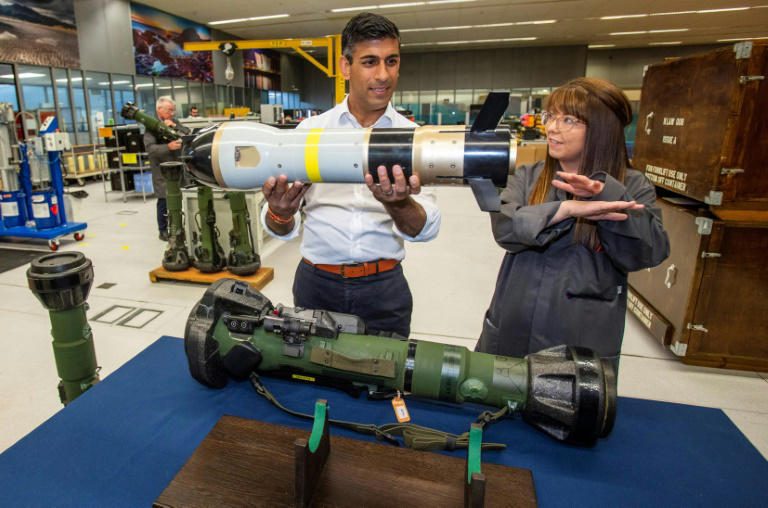Missile launch tubes are lined up on the newly opened, largely automated assembly line at the Thales factory in Belfast to meet the demand for anti-tank and anti-aircraft missiles supplied en masse by the UK to Ukraine.
(AFP) The factory is operating at high speed to meet Ukraine’s war needs. The French group produces, with its Northern Irish plant, Starstreak anti-aircraft missiles, the LMM – a lightweight modular missile that can target both ground targets and drones in the air.
Thales also assembles the NLAW portable anti-tank missiles on order from Sweden’s Saab.
Production, which had declined considerably after the end of the Cold War, “doubled in two years to the highest level we’ve ever seen, and will double again in the next two years,” says the president of British Thales, Alex Cresswell.
He did not reveal the quantities produced of the short-range missiles – 800 meters for the NLAW and 7 kilometers for the Starstreak or the LMM.
These missiles have, in particular, the ability to be fired from the shoulder, and have already had their baptism of fire on the Ukrainian front line.
Even before the Russian invasion, the British had already supplied Ukraine with more than 3,500 NLAW and have promised, since the first weeks of the conflict, to deliver a further 6,000 missiles, including Starstreak and LMM.
Since the start of the war, London has provided 7.1 billion pounds in military aid to Ukraine, making the UK one of Kiev’s main supporters.
“By 2022, Thales Belfast products had become an essential asset of British supplies to Ukraine,” points out a report by the London-based expert group Rusi, showing “the value of low-cost weapons, which played an important role in preventing the Russians from achieving a quick victory.”
Thales also trained hundreds of Ukrainian soldiers, by order of the British army, in the handling of the Starstreak, a missile whose three tungsten explosive arrows, propelled at a speed of 3,600 kilometers per hour, managed to shoot down several Russian helicopters.
Advance purchases

To cope with increased demand, the factory hired 140 people last year, bringing the total to 900 employees, and plans to add another 100 this year. In a huge room, technicians equipped with large magnifying glasses and welders assemble missile components. At the back, the space dedicated to assembling the NLAWs has an unoccupied area that will soon house a second production line.
In order to make deliveries quickly, Thales anticipated the contracts and placed orders on its own with its supply chain, so that they would be available when the time came, explains the owner.
This is a necessary move, considering that the production of some elements of the missiles, such as engines and warheads, can take up to three years. That’s why, in 2013, three years after the last British order for Starstreak, a missile in service since the mid-1990s, Thales made “a very significant commitment to the Starstreak supply chain”.
“Even today, we have some of the components needed to manufacture missiles,” adds the plant manager. But with export sales already signed since then, “there is very little left that we can manufacture” in the event of additional orders.
“The limiting factor is not our facilities,” says Cresswell, “but the supply chain.”
mra/uh/psr/mb/ms/aa *** Translated by DEFCONPress FYI Team ***
